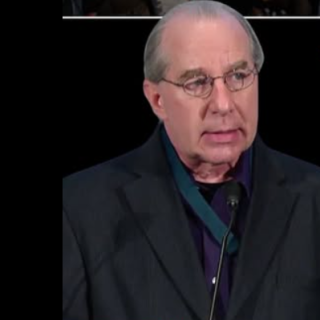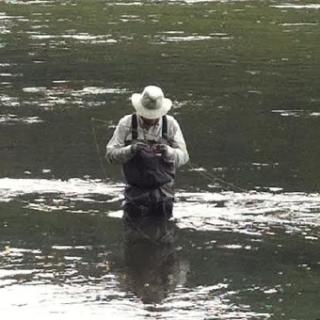Advertisement
November is Native American Heritage Month and November 26th is Native American Heritage Day. For some Native Americans, Thanksgiving is a day of mourning.
This past Spring Equinox, former First Lady of Ohio, Hope Taft, set off on foot from southwest Ohio for 160 miles over back roads visiting the state’s most noteworthy Native American earthworks, which are on the threshold of becoming World Heritage sites as determined by the United Nations.
If successful, this places Ohio’s earthworks with Stonehenge and the Great Pyramid of Giza and makes them the state’s first World Heritage designation.
Yet well into the 21st century, white Christian men, Mormons in particular, are still seeking to re-write and even erase Native American history in “Ohi:yo,” which is Iroquois for “the great river” and the inspiration for “Ohio.”
Many laugh heartedly at the Evangelicals, and some historians believe they made another embarrassing error in research – which is an understatement in so many ways – during their recent pseudo-archeological-related work in Ohi:yo.
What isn’t a joking matter is how these Evangelicals continue to propagate racism against Native Americans who are deeply offended by any suggestion these earthworks were not the creation of their ancestors.
And what the Shawnee, the Miami, the Delaware, the Potawatomiand many other descendants of the Ohi:yo “Moundbuilders” would like Americans to also know is, Taft and nearly everyone else are still guests in stolen lands.
Unsurprisingly, Ohi:yo is also where Shawnee chief Tecumseh in the early-1800s tried to unite Native Americans for one last stand against invading Europeans (pictured above upper left).
Again, the First Nation tribes who claim stewardship of the watershed that is the Scioto River valley are descendants of one of North America’s most intriguing tribe(s) – the “Moundbuilders.”
The Octagon’s energy
Taft has quietly been advocating for World Heritage recognition for a decade and a half. Her journey on foot, which she completed every other weekend, ended at the Newark Octagon, a roughly 2,000-year old ceremonial site.
The Octagon is one of the world’s largest geometric earthen enclosures but held captive by Moundbuilders Country Club, a private golf course.
“We wanted to see if we could find a way to travel between the American Indian ceremonial sites proposed for World Heritage recognition without going on major roads,” wrote Taft recently. “Our Walking Ancient Ohio experience did just that.”
World Heritage recognition, as many know, depends on whether the Ohio Supreme Court rules in favor of the Ohio History Connection (OHC) which won lower court decisions to take back the Octagon through eminent domain. Moundbuilders Country Club appealed and a ruling from the state’s highest court was expected this month.
“If a decision is rendered in our favor, we would return to Licking County Common Pleas Court for the valuation trial that was delayed while the country club appealed,” said OHC spokesperson Savannah Robles to the Free Press referring to how much the OHC may have to pay for the country club to vacate.
If the OHC were to lose?
“We will continue to live out our mission by preserving and sharing the Octagon to the best of our ability under the circumstances. We will look for new opportunities to connect people near and far with these remarkable American Indian earthworks,” said Robles.
Nevertheless, on a blustery, sun-drenched Sunday afternoon in October the country club allowed complete access to the Octagon, and some say the energy within its earthen walls is palpable.
The Octagon is, after all, a marriage of heaven (the cosmos) and earth. This is how maverick historian Graham Hancock describes Serpent Mound’s connection to the Summer Solstice. Almost inversely, the Octagon tracks the moon’s major orbital cycle of 18.6 years, capturing its maximum northern moon rise, or what some refer to as the moon’s major “standstill” (pictured above lower left).
The country club allows total access for a handful of “open house” days and on Mondays when the course is closed. This is excruciating for some Ohio historians because by any golfing standard, the course is not true to the game, akin to a giant putt-putt course. And if it were in Columbus, it would have a $20 greens-fee for those carrying their own clubs and walking, which should be mandatory considering the course (the Octagon) is flat to a surrealness.
Like Hope Taft, there are other non-indigenous Ohioans doing yeoman’s work, such as the OHC’s Dr. Brad Lepper, working to promote the site. During October’s open house, Lepper enthusiastically explained the Octagon’s history and purpose to wave after wave of the uninitiated who visited through the day.
What has also come in waves for two centuries are those who can’t bring themselves to believe that Native Americans built the earthworks such as the Octagon.
The Algonquian ‘Thunderbird’
Dr. Lepper has relentlessly tried to wipe away the “Moundbuilder Myth” and there are several. For example, some claim the earthworks were built by either a race of giants or little green men from space.
But the one myth which refuses to be debunked is that a “Lost Tribe of Israel” built the earthworks. As laughable as this sounds, it’s no joke considering the First Nations are the true “lost tribes” of these lands.
The “Lost Tribes of Israel” myth has its origins in 722 BC when Jewish tribes disappeared following an invasion by the Assyrians. Where the tribes went has sent Evangelical Christians into a fever for nearly two millennium because they refuse to believe today’s Jews are not the true descendants of the Jews who helped author the Bible.
This same Evangelical fever caught the Newark Octagon in its web when Glenn Beck, a Mormon, argued the Octagon is of Israelite origin. The hoax that was also the Newark Holy Stones, which depict Moses, further promoted the racist narrative Native Americans were not deserving of their homeland.
More recently, a group of Mormons from Pennsylvania – the Heartland Research Group – came to Ohio with cutting-edge technology used by archeologists that can “see” underground: a magnetometer from Germany, replete with a German engineer.
These Mormons, as stated on their website, were in search of “proof of an ancient Hebrew people who lived in the area.”
The proof they were looking for is a long-lost earthwork east of Cincinnati on the East Fork Little Miami River some refer to as the “Hanukkiah” or “Lost Menorah” mound because it weirdly resembled a nine-branched menorah with an attached oil lamp (pictured above lower left). Like thousands of others, this massive earthwork was plowed under by farmers in the 19th century.
Drawings or maps of the “Hanukkiah” mound from the 1800s exist, however, and this is how the “Lost Menorah” myth was birthed, claims historian and Harvard grad Geoffrey Sea of Portsmouth.
Sea, who is Jewish, has spent a lifetime researching Ohio earthworks and scoffs at any suggestion they are not Native American. And roughly five years ago he destroyed the myth that is the “Lost Menorah” earthwork.
Sea believes he is the first to hypothesize the “Lost Menorah” is instead a Thunderbird effigy built by the Algonquian.
“I discovered this largely by looking at a lot of Algonquian ‘Thunderbirds’ and I saw that’s likely what it is,” says Sea. “I also did a very simple thing. A lot of people make the mistake assuming Native Americans used our own convention of placing north at the top of every map we make. So a lot of people never think that maybe another culture would use a different directional convention. Like maybe they would place east at the top, or maybe place south at the top.”
He simply inverted one of the earthwork’s drawings that had been made in the 1800s (pictured above upper right).
“If you turn the Menorah around, the so-called candle-sticks become vertical bars dropping from the wings. And that happens to be the way Algonquians depict Thunderbirds, always with vertical bars dropping from the wings,” said Sea.
But what about the “oil lamp” depicted in the original drawings?
“The oil lamp was fabricated,” believes Sea. “It was drawn to be a menorah. It was the artist who committed the crime you could say. And by creating an oil lamp that is totally not there.”
The artist was Isaac Roberdeau, who was Jewish, and he had visited the site in 1823, and it was he who made the earthwork’s second-ever drawing, says Sea.
“When I first saw his drawing, I thought, ‘this symbology probably looks like what it looks like because the artist intended that, and he probably intended that because he was Jewish’,” says Sea. “He wanted it to look like an oil lamp and a menorah. And we can speculate why he would do that. Part of the story is his family had to fight against anti-Semitism. Was this his little rebellion against anti-Semitism, by putting these little Judaic elements into a map when he knew they weren’t there?”
Even with this information at their fingertips, the Mormons from Pennsylvania were determined to prove the Lost Tribes of Israel lived in Ohio by spending thousands-of-dollars renting a magnetometer from Germany.
The Free Press did speak to a representative of the Pennsylvania Mormons, and while friendly and cordial, they still believe the Native Americans in Ohio who built the earthworks had “Hebrew blood” in their veins.
Nonetheless, their pseudo-archeological work seeking the “Lost Menorah” may have been a loss of time and money, believes Sea after he carefully reviewed their work which has been posted online.
“The Mormons simply found the wrong location and have been surveying a site with no earthworks. Meaning all their surveys are just looking at natural bumps in the terrain,” said Sea.



